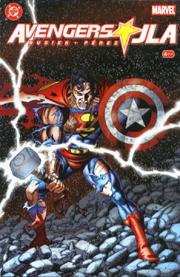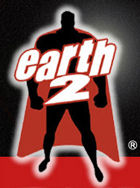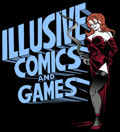JLA/Avengers #4
The Brave and The Bold
writer: Kurt Busiek
artist: George Perez
The cover alone tickles fans in their deepest darkest fanboy
places. Obviously ready for business, a battered Superman
grips Mjolnir in one hand while wielding Captain America's
mighty shield in the other. Is it some strange merge of some
of the most powerful superheroes ever? Did Superman beat the
other heroes down for these prizes? At this point, does it
really matter?
In truth, this final issue blow-out no holds barred brawl
is so orgiastically on the edge of incoherent that it really
doesn't matter how Superman ends up with those items,
which points to a larger problem with this long-awaited mini-series.
Busiek and Perez deliver things fans want to see. Only occasionally
do they bother coming up with a good reason why we're seeing
it.
And so we have a work that celebrates the best and worst
of the superhero genre. If someone started the rumor that
this last issue suffered a delay because Perez hemorrhaged
after drawing so many obscure heroes, it would be perfectly
believable. Every page is loaded with finely detailed action
that rewards going back over it just to try to catch it all.
At the same time, Busiek affords Perez a witty bit about
the sameness of all the various evil organizations that wreak
havoc in both universes. (Hydra and Kobra's forces both adapt
way too easily to hailing Krona.) Seen from this perspective,
you have to admit that there really isn't that much separating
a Parademon from an A.I.M. agent but a few colors. After all,
both were designed by Jack Kirby.
The onslaught, set on the corpse of Galactus and somewhere
outside of time itself, surely makes the little kid in us
giddy. But it also starts to look like a HeroClix game, as
multiple versions of Avengers and Leaguers blink in and out
of the action without rhyme or reason, and only the wispiest
of characterizations. Even the big villain of the piece, Krona,
loses focus and decides that it's all about destruction. (This
usually happens about twenty minutes into a Fanboy Planet
Clix game.)
Busiek tries, but he has also set himself up with a task
to big to accomplish. Or maybe because in the first two issues
he seemed to favor the Justice League, he owes The Avengers
some sort of debt. Much melodramatic energy gets spent by
The Vision over the, um, vision of his children's brief and
actually non-existent lives. Henry Pym agonizes over the possibility
that he will one day be abusive toward The Wasp, though thankfully
that abusive persona, Yellowjacket, never appears.
On the DC side, though, everybody seems okay with having
seen their more ludicrous futures. At least Barry Allen gets
a speech putting it all in perspective, and it makes sense
coming from him. But (and this is not the first time its happened
in a DC book) you have to wonder about Hal Jordan seeing his
future as Parallax, even becoming the villain for a
panel, and not going completely bug nuts about it. So, too,
shouldn't Wonder Woman have just a moment of mixed emotion
seeing her mother Hippolyta back from the dead, especially
when Phil Jimenez did such a tremendous job establishing that
death as tragedy?
To an outsider, this is a stereotype of superheroes: superficial
renderings of emotion as an excuse to look at pictures of
people beating each other up. Yes, there's a part of us that
does kind of respond to that. But for an event this big and
this anticipated, it's a shame that Busiek couldn't find a
stronger balance between the two sides, and I don't mean Marvel
and DC. The whole thing reads like a team book from the seventies,
which isn't necessarily a bad thing. However, it would be
nice to think that those of us waiting twenty years for this
book grew up a bit in the meantime.
Rating: 






